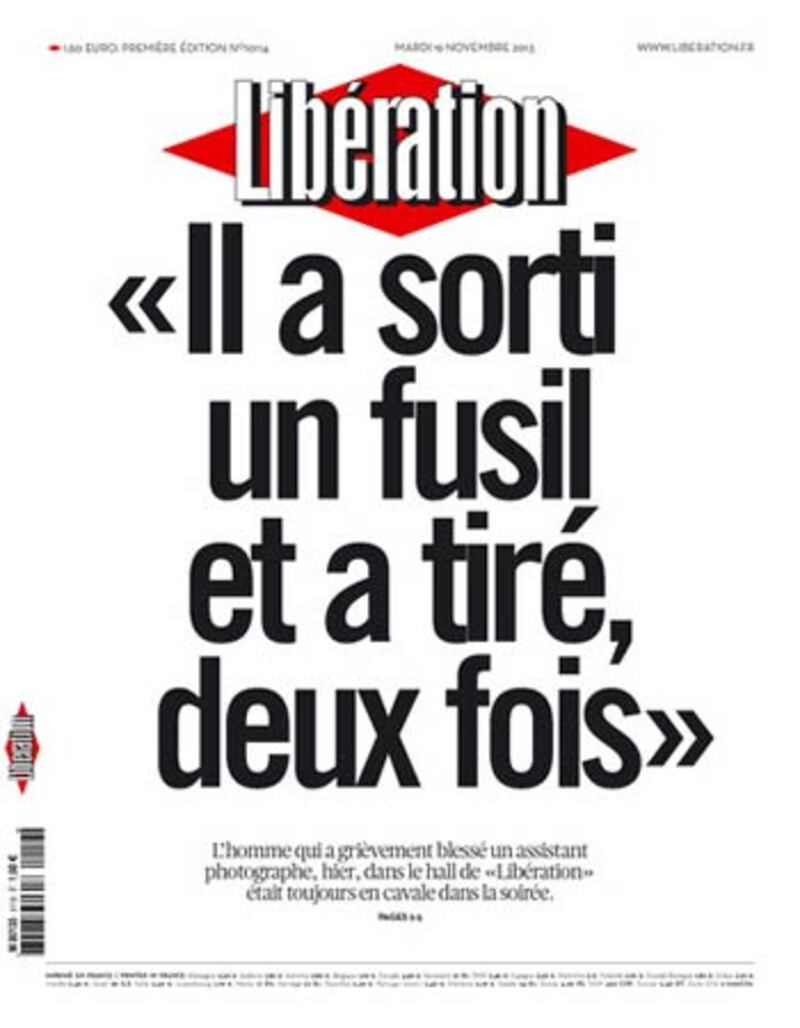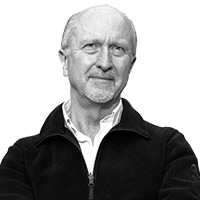The shooter roaming Paris, France, right now is a morning person, and he’s not very good with guns. In America, a madman on a mission like his would no doubt have carried automatic pistols and probably an assault rifle. This guy’s got a 12-gauge pump that jams.
In the United States, men, women and children would have died: there were, on average, more than 30 mass killings (of four or more people at a time) every year in the USA from 2006 through 2012. Here in France, such incidents are extremely rare, and in this case no one has died. But precisely because this kind of gun violence is so unusual in Europe and seems so random, people are scared.
Until the shooter is caught, journalists and bankers in Paris will be especially on edge. They seem to be his favored targets. One young man, a photo assistant at a newspaper, lies gravely injured, and the police are begging for the public’s help because they seem to have no leads.
Closed-circuit videos show a suspect who is white, 35 to 45 years old, and has salt-and-pepper hair. He wears a dark baseball cap (no insignia), a dark down vest over a pale green sweatshirt and more-or-less matching green shoes with white soles. Sometimes he wears a khaki coat. He carries a bag with a shotgun in it, and maybe (we don’t really believe this) grenades as well.
Why did he walk into the offices of the left-leaning Paris daily newspaper Libération near the Place de la République yesterday morning and open fire, critically wounding the young assistant photo editor near the door? Why did the same man, it appears, barge into the foyer of the BFMTV cable news station on the southern edge of Paris before dawn last Friday—so early there was hardly anyone there—and try twice to fire his shotgun, unsuccessfully, before running back out the door?
Annette Lévy-Willard, a staff writer at Libération, theorized in a New York Times op-ed Tuesday that the shooter’s violence may have been spawned by “a strange, febrile atmosphere” in France that has seen a seeming resurgence of right-wing fanaticism, racism and anti-Semitism. But there’s no evidence for that theory at all. Your guess is as good as hers.
After the “man-with-a-cap” shot up the Libération offices yesterday he headed to the other side of town on the Métro. Video surveillance showed he’d change into a blue sweater or sweat-shirt, red quilted jacket with a dark collar, and a knit cap. Among the skyscrapers of La Défense he and fired off a few rounds at the Société Générale bank headquarters, but hurt no one. Witnesses described him as “calm and determined,” and someone who knows very well what he is doing.

Then he hijacked a little car and had the aged driver drop him back in the middle of the city near the Champs Élysées in front of the luxurious George V Hotel. He told the driver his bag was full of grenades. Then he seems to have disappeared back into the Métro.
The tabloid Le Parisien is calling the suspect “the crazy shooter,” but criminologist Alain Bauer cautioned this morning against jumping to any conclusions.
“Nobody knows if he is crazy,” Bauer told me. “That’s just a quick way to describe somebody in a headline. He may be angry. He may be seeking revenge. He may be a little crazy. But he is more rational than some stories make him appear. He is looking at very precise targets.” And notwithstanding the terrible injuries this man inflicted on one victim, in most cases he did not shoot to kill, or even to hit the people nearby.
When Bauer pointed this out, the phrase that went through my mind like a grim joke was, “How un-American of him.” Our revenge-seekers and nut-cases in the United States shoot to kill in quantity.
“Why are mass murders so common in America and so rare in France, or for that matter in Europe?” I asked Bauer.
“We don’t have the same gun culture,” he said, “and we don’t have the same idea that we should take revenge by ourselves instead of letting the state and the judicial system do their work.” There is a lot of violence in France, said Bauer, but not so much with guns.
Partly, it’s the nature of the weapons on hand. “In France, a lot of people have one gun, usually to go hunting,” said Bauer. Estimates vary, but several million firearms are in private hands.
There is also a psychological distinction in the minds of many gun owners between the weapons meant to kill animals and perforate targets, and those intended from conception to manufacture for the purpose of killing people.
To buy a shotgun in France, the most common weapon, requires a background check and certification that you’ve passed a test similar in its detail to the exam for a driver’s license. Guns designed as weapons of war—even those that just look like assault rifles—are much harder to get. Legal owners of AK-47s and AR-15s are extremely rare in France.
Illegal owners are another matter. Criminal organizations and drug dealers have tapped into the weapons markets of the Balkans and North Africa to arm themselves with weapons of war. In the crime-ridden housing projects of northern Marseilles, AKs are now common, but mainly for settling scores among rival gangs. “Sometimes there is collateral damage, but it is rare,” said Bauer.
As a result, there have been calls to give the police more and better weapons in France. But there has been no popular movement to arm the general population with assault rifles in the name of self-defense; there is no significant lobby or organization making the argument that more guns in more hands would make society safer.
That way, the French believe, lies madness.






